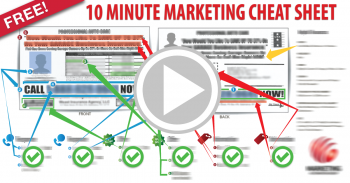All posts by Bob Britton
What is the Value of Buzzwords to Small Business Owners?
You have seen them, heard them, and used them. So have I. Buzzwords—there are a lot going around. Buzzwords are phrases that are shorthand for something meaningful in the culture at the moment. Harvested from television, thought leaders, politics, and the world at large, buzzwords are often a fast way of saying something more complicated.
Every so often you see an article listing the top ten or 20 most overused buzzwords. It is an easy, entertaining topic. But business buzzwords, whether overused or not, provide reminders of valuable ideas that could help your business.
Thinking outside the box and that kind of thing
Old and new, buzzwords have something for everyone. My job is to work with entrepreneurs to help them create value. Value is a big buzzword—but also the perfect word to define why someone should want to buy the product or service that someone else is selling.
Let’s take a look at some buzzwords of note, and what they might mean for you as an entrepreneur:
- Win-win: This is a great phrase, which has been around a long time. It rolled into the culture with the alternative dispute resolution (ADR) movement, and techniques like negotiation, for people to get what they want without bankrupting their businesses through litigation. For the entrepreneur, win-win is all about building the product someone wants, and charging a fair price for that asset. Too often, small business owners develop a great service, and charge too little. Sure, you have customers, but selling at a perpetual loss eventually stifles or destroys your business. Be fair—to yourself, and others. Win-win—a great product or service sold at a profitable price—is something you should always aim for.
- Core-competency: Thrown around a lot, especially in tech and human resource fields, core competency is an important word for the small business owner. Time and again, I ask my clients what they want to be doing, and I work with them on what they should be doing as the owner of their business. Way too often, they spend their time on tasks that could be done by others. As an entrepreneur, you must tend to your core competency—i.e., the work in your business that only you can do—and delegate the rest.
- Think outside the box: This old term was practically a mantra for an incoming generation of innovators, tech talent, and business owners. For entrepreneurs, thinking outside the box is not a buzzword—it is a necessity if you want to stay relevant in the marketplace.
- Storytelling: Although it is a new buzzword, storytelling is far older than the marketing industry. Storytelling is all about another buzzword, engagement. Humans are attuned to narrative of any length. For example, case studies are storytelling. The kind of engagement created by storytelling helps you explain your products and services, build a solid customer base, and draws your clients into an ongoing relationship with you and your brand.
- Big Data: The term Big Data is often used by marketers telling you that you need more Big Data to know how to sell to your customer. But, Big Data is actually just a lot of information that we now have the technology to capture. To use Big Data, you have to be smart and know what data you really need—and how it can help you. I work with marketing automation and help my clients fine-tune their data needs, in order to personalize and enrich the buying experience of their customers.
- Millennials and Boomers: Some buzzwords that describe your consumer audience are Millennials and Boomers. The Boomers were born after World War II and are pushing big changes in health care, retirement, and other services. Millennials were born between 1982 and 2004. These young adults grew up with tech and represent a strong market segment for goods and services. Strangely, no one talks much about the so-called Generation X, individuals born between about 1961 and 1981. Growing up on the cusp of the technology boom, Generation X’ers are in prime purchasing years and should not be ignored.
- At the end of the day: Pithy but perfect, at the end of the day, is the goal of your business planning. Always understand the bigger picture, your goals, and how much money you need—and want—to make from your small business enterprise. With no horizon line, you have no idea where you are going. Create structure, get advice, and adjust your business goals as you, and the economy, change.
Making bank. It means earning a profit. When you want to make more money by working smarter not harder, call me at 585-633-7563.
Yours in profit,
Bob Britton
These Factors are Impacting Small Business Owners Today
 It’s a wild world. We talked about VUCA—the sweeping forces keeping entrepreneurs on their toes. But do you want to know the real-world factors that impact these forces? Let me tell you.
It’s a wild world. We talked about VUCA—the sweeping forces keeping entrepreneurs on their toes. But do you want to know the real-world factors that impact these forces? Let me tell you.
Running a business is not what it used to be. Some things remain—good planning, structure, pricing, and marketing. You do not need a lot of money to get into business—but don’t be undercapitalized. These days, it isn’t enough to want to “disrupt” your industry—it’s been done already. Now is the time to get smart about market forces because volatility has become the norm.
The market belongs to the nimble—three views to keep in mind
Do you have a great product or service? Let’s assume that your marketing is working for you, and then you hit a bump, or you lose an important client—you’re sunk. How do you pivot and what are the factors that can help you keep moving?
I work with entrepreneurs with brick and mortar and virtual storefronts. My goal is to help my clients make money—and keep making more. Profit flows to those who make smart choices, and take necessary, informed chances. That is what I do—help small business owners understand their choices—and chances.
Change is constant, and here are some important features all entrepreneurs should be aware of:
- You are important: Sure, everyone is important. I mean your brand—your personal brand, not only your business. For small business owners—your personal brand is often what gets you a job, or loses it. Wherever your financing is coming from, investors want to know who they are dealing with, whether you can be trusted—do you have a history of smart decisions and responsible behavior? Especially with start-ups, or new ventures, a great deal of big business still requires you to pass the smell test before someone buys from you—or sinks money into your efforts.
- Changes in the system: Stuff happens—all the time. The big picture changes depending on what channel you watch. Consider the influence of just a few overarching systems including:
- Weather: The weather is a huge system that has a big impact on business. According to the National Center for Atmosphere Research, the wily ways of weather patterns can influence the U.S. economy to the tune of $485 billion per year. Production, supply, manufacturing, energy, transport—are just a few criteria impacted by weather. Climate change affects where people live, what they buy, and where they go to spend their dollars, and their careers. Like the economy, the weather is not expected to settle down anytime soon. Keep it in mind.
- Trends: With social media, content marketing, and marketing automation, you can reach out and touch a good portion of not just your client base—but the Create the next viral video and enjoy your fifteen minutes of fame, or a few million dollars brought to you by your ability, and the ability of your team, to tap into a shifting, restless world eager for the next new thing.
- Tech: Tech is no longer just an industry. It is what you need to build into your business through innovative marketing, better processes, supply chain decisions, communication, and more. You may have a great idea, or a well-established business, but if you cannot move with the times on technology—you are going to get left behind.
- Know where you are on the curve: Are you just out of college and vying to build a no-cost start-up into something big? Have you been on a career track for ten years and ready for a change? Maybe you are part of the third-age, the Boomers or close to them, with decades of valuable experience and a desire to put it together in a different way.
Whether you are a micro-entrepreneur, or a successful CEO planning to step out, it is important to know the right steps to get where—and what—you want. Do you want to struggle for the next ten years for sweat equity? Or make some real money to support your current or hoped-for lifestyle? Work with a mentor, or business counselor to find your place on the curve, develop the right questions and be sure you have the right answers to get your best chance at success.
A big part of a profitable business today is learning how to successfully fit into a world of change. Your biggest assets are what you bring to the table in the form of knowledge, experience, adaptability, and willingness to seek and receive good advice.
When you want to ride the wave, instead of being swept up in it—call me at 585-633-7563. I can help you make the money you want.
Yours in profit,
Bob Britton
Looking for Profit in all the Wrong Places
 Take Charge of the Numbers to Take Charge of Your Business
Take Charge of the Numbers to Take Charge of Your Business
I talked recently about numbers that tell us something about the current business climate. Now let’s talk about the numbers that make, or break, your business.
Dawn Fotopulos is the HiddenProfitProphet. I had a chance to sit down recently with this award-winning author, educator, and entrepreneur to talk about how small business owners can get a handle on their financial details, do better business—and make more profit. I got to know Dawn when she joined my MAG Elite Mastermind Group.
Dawn helps small business owners find profit where they least expect it—in their balance sheets. She wrote the best-selling book, Accounting for the Numberphobic: A Survival Guide for Small Business Owners, and offers great tips and advice on her website.
Smart financial moves—get the inside scoop from an expert
Talk to a mentor, advisor, or top talent in your field when you or your business drift. The later you look for help, the harder it is going to be on your business—and your profit. I work with professionals like Dawn to fine tune business plans and establish marketing strategies to crush their competition.
I talked to Dawn to get her take on financial questions common to all small business owners. Here are some of her responses to my questions. To learn more about Dawn’s great ideas—read her excellent book.
Q. At some point or other, entrepreneurs hit a wall. When struggling with their bottom line, what is the biggest mistake small business owners make?
A. Every business owner thinks if they’re having trouble paying the bills, they need more customers. They might very well be scaling an unprofitable business! In fact, that’s what many used car dealers are doing. They think if they sell more cars, they’ll make more money. It’s exactly the opposite. If you’re losing money on every deal, you really can’t make it up in volume.
Q. Do you find entrepreneurs are good with ideas, but challenged by their financial statements? If so, how are they challenged?
A. I took a poll at The New York Times Small Business Summit Conference over a five-year period. During that time, I asked 5,000 small business owners one simple question—“True or false, a Net Income Statement and a Profit and Loss Statement are the same thing.” Only one out of one hundred business owners knew that was true. That’s not a problem—it is an epidemic. Would you ever drive your car with your eyes closed? No. Then learn how to read your financial dashboard. By financial dashboard, I mean your Income Statement, Cash Flow Statement and Balance Sheet. These documents are key to running your business and making good decisions. No matter what business you’re in, you must be able to answer three questions:
– Are you making money?
– Do you have enough cash to pay the bills?
– Are you building wealth or destroying it?
Your financial dashboard will answer each of these questions.
Q. Do you encounter small business owners who are afraid of the financial work in front of them? Why do you think that is? What are they most afraid of?
A. They’re not afraid; they’re terrified.
It’s too intimidating. They feel like they have to become an accountant. If they’ve taken accounting courses, they never understood debits, credits and reconciliation. What if a business doesn’t need to learn how to keep the books—but just learn how to read their financial dashboard?
Many think their accountant’s job is to read their financial dashboard. Your accountant will not run your business any more than your mechanic will drive your car. It’s your job to navigate.
Your financial dashboard shows you how. Most people are intimidated because the topic is complex and often taught by very knowledgeable but really boring people. That’s why I wrote the book and had it illustrated by a Disney artist. It was time to make running a business fun, exciting and interesting again. If you look at the comments on Amazon, you’ll see many people who were once intimidated are now finally gaining the confidence they need to run profitable, cash-rich companies.
Q. You have written a well-received book about diving into financial details. Can you explain a couple of concepts from the book, such as what are the most important financial documents and how can these documents help a small business owner?
A. The Net Income Statement is like the speedometer in your car. How fast is your business producing profits? Is your business beyond the breakeven point (is it self-sustaining)?The Cash Flow Statement is like your gas gauge. It will show you how much cash is available to run the company and for how long. Your Balance Sheet is like an oil pressure gauge. Too little pressure (debt), and you don’t have ignition. Too much debt, and you’ll go bankrupt. The Balance Sheet is also the Net Worth Statement of the business. Every banker and investor scrutinizes this statement. Make sure you know how to read it, and improve on it from operations. These statements are your GPS for running your business. Think about it, if you want to get to your destination, wouldn’t it be helpful to have a path to get there? I can get to Ogden, Utah, by trial and error but it will take my lifetime that way. These financial statements, like a GPS, get to you the promised land of living off your own cash flow a lot faster.
Q. What are the basic steps an entrepreneur can take to manage these important details and create profit?
A. Gross margin. Gross margin. Gross margin. Ever watch Shark Tank? Like the sun rising in the east, every business owner is asked, “what are your margins” on their products. Why? Because margins drive profitability. There’s a lot more I can say to your question. The best thing to do is read my award-winning book, “Accounting for the Numberphobic; A Survival Guide for Small Business Owners.” It won “Best Business Book of 2015 in Economics” from Small Business Trends. The book takes you by the hand and explains, line by line, what’s happening in your business and provides you simple, no-cost strategies to fix the broken things. It should be mandatory reading for anyone going into business.
Q. Are there accounting and profit choices you would make differently for a products-based versus a service-based business?
A. Valuing time is perhaps the biggest challenge for service providers. Also, managing invoicing and billing becomes more complicated, especially for service providers who work on multi-phase projects. Time is your only recoverable asset so keeping track of that, especially as it relates to direct labor costs, is crucial.
I’ve seen many service providers who are so busy giving great service to their clients, they don’t track how much time that’s actually costing them. A large client could in fact be their least profitable client.
In either product or service businesses, the owners need to look at their gross margin two ways—by product or service and by client. For the business owners who have purchased my Hidden Profit Academy courses, they get this. That gives them visibility to really know what products or services are working hard for them and which ones to change or eliminate.
Q. In a downturn or even when the invoices have not yet been paid, how can small business owners maintain their cash flow?
A. First, you have to diversify your client base. If you only have one or two big clients, you’re at risk if either of them leaves or falls on hard times.
Second, you have to have two ways out of the room. Always apply for a credit line when you don’t need it, then you have it if cash gets tight.
Stay on top of your accounts receivables aging report like a hawk. Know exactly who owes you money, how much, and for how long. If any receivable ages beyond 30 days, the likelihood you’ll ever get paid goes down dramatically.
Learn how to collect outstanding debts from clients. This is a more important skill than learning how to sell. Business owner need to learn this early on. My book provides sample openings and dialogues to do this painlessly. Chapters 5 and 6 are worth the entire ten chapter book.
Q. You have talked about simple steps, “One Thing,” to add cash to your business account right away. Can you give us one or two tips?
A. Make sure your invoice includes not just the date of delivery, but what you delivered to your client. Remind them of what a great decision they made to hire you. You didn’t just build a website, you improved the customer experience and thus the client gained increased traffic and engagement. Once they read this, they can’t wait to pay the bill. Stop waiting too long to send the client an invoice. Invoice them weekly or bi-weekly. You’ll get paid faster and the client won’t be overwhelmed.
Q. What financial trends do you see with small businesses, the recovering economy, and a faster paced, more volatile market for goods and services?
A. Nimbleness is key. Don’t make or accept long-term commitments. Be on top of technology. Everything you can do to save time, decrease error rates, and to streamline daily processes is worth your investment. In terms of macro trends, I’m most concerned about central bank policy. No society in the history of man has survived currency debasement over the long haul. Just ask the Romans.
Take control of your business by understanding your real financial situation. Get good counsel about your financial dashboard—and your business or marketing plan—to make more money doing what you love. When you are ready to ramp up your income—call me at 585-633-7563.
Yours in profit,
Bob Britton
Signal or Noise? How Do Your Help Your Customers Choose You?
 You have a terrific product or service—and a lot of competition for the business. How do you help your target customer choose you?
You have a terrific product or service—and a lot of competition for the business. How do you help your target customer choose you?
My business is helping you identify, attract, and land the customers you want, to make the profit you need. As a small business owner, I know what works, and how to use marketing technology to steer business your direction, and keep it coming.
But when it gets down to it, how do you help your client hear your message, and understand your brand, through all the noise? It is not as hard as you think.
The dynamics of choice and marketing
A lot is written about the psychology of choice. Drill into the topic and you’ll find research looking at why people make the choices they do.
Understanding why people make choices is important. As small business owners, we want to know how to influence choice to get more business. Poor marketing and product lines mean your premium clients go elsewhere.
As a consumer, you know what it takes to convince you to buy. Taking that perspective is important when thinking about how to sell to your client base. Consider these points about the experience of choice:
- Choice: It is important to do what you do best. If you sell one product, or one type of service, you need to be the absolute best and understand that you are working in a niche market. In a TED talk, author Malcolm Gladwell talks about choice—and spaghetti sauce. The take-home point is that there is no one kind of human, so offering few products, or services, could be a limiting factor to your business.
- Too much choice: Plentiful research bolsters the belief that too much choice is not a good thing. Offering a dizzying array of information, products, or services is just that—dizzying. Chances are good you will land a customer if you have a lot of choice—just make sure the choice is presented in a way it can be consumed. Design your website with filters, make auto-suggestions, enable reviews, and offer pages with a limited number of products, to create a pathway to purchase in digestible bits.
- Bias and other fine qualities: Your client approaches your business with pre-conceived ideas. How you present yourself, or your product, plays to their needs, fear, and identity. Humans place inordinate weight on the first information they receive about a person, place, or thing. If a good friend liked your restaurant, your new customer is predisposed to like it, too. If a client reads a negative review of the service you sell—you need to work harder to overcome that bias. If a customer is in need of basic information, your knowledge of your product—without an initial sales attempt—gives you a chance to create the image of a knowledgeable, trusted ally instead of a pushy salesperson.
Sales work is mostly psychology, with products mixed in. Know your customer, and know what you are really trying to sell.
To get to the sell, start at the beginning
Most people can sell something once. To profit and grow your business, you have to meet the needs of your customer repeatedly. Marketing hype has its place, but the bottom line is that you have to understand your business from the viewpoint of your customer.
There is a well-known story about the angel investor who kick-started Apple. Everyone starts somewhere and Apple founders, Steve Wozniak and Steve Jobs, originally worked out of a garage. Their first investor was Mike Markkula. As the story goes, Mr. Markkula also wrote a three-part marketing platform that continues to serve this very successful company.
The three mandates written by Mr. Markkula in 1977 remain effective and include:
- The quality of empathy: “We will truly understand their needs better than any other company.”
- The ability to focus: “In order to do a good job of those things that we decide to do, we must eliminate all of the unimportant opportunities.”
- Recognition of people to impute: “People DO judge a book by its cover. We may have the best product, the highest quality, the most useful software etc.; if we present them in a slipshod manner, they will be perceived as slipshod; if we present them in a creative, professional manner, we will impute the desired qualities.”
Take what we know about the science of choice, combine it with rock-solid marketing philosophy, and a great product, and you are on your way to small business success.
By understanding your own business, you can help your customer make a choice that benefits both of you. When you need help understanding the bottom-line of your business, call me at 585-633-7563, I can help.
Yours in profit,
Bob Britton
Business: Going Up! Going Down! What’s Behind the Numbers?
 One report says business start-ups have never looked better. Another survey talks about persistent decline. With the business outlook in churn, what do the numbers mean to you?
One report says business start-ups have never looked better. Another survey talks about persistent decline. With the business outlook in churn, what do the numbers mean to you?
While you focus on landing that client, or pivoting your marketing message, the economy is moving fast. Getting to market with a good plan, new ideas, and great products makes for a winner, but it is also important to understand your business ecosystem—is it healthy?
New reports: Do statistics lie?
Numbers are important to any business owner. Your bottom line, your profit margin, your price point—every number carries weight. In terms of business climate, let’s take a look at some overall reports:
The Brookings Institution: This organization recently released a study on business dynamism, the churn that occurs when companies start-up, succeed, grow, or fail. Its findings include:
- Statistically, a new business starts each minute, while another fails every 80 seconds.
- Business dynamism, the growth and decline of companies in the private sector, has fallen for years.
- Reduced dynamism results in slower economic growth.
- New regional and national measures are needed to fuel small business growth.
Kauffman Index: According to a study from the Kauffman Foundation, 2014 saw the strongest entrepreneurial growth since 2010. Some interesting entrepreneurial points include:
- Most new small business owners are men, at approximately 63 percent. According to the report, the rate of new female entrepreneurs is near a two-decade low.
- Called opportunity entrepreneurs, owners who are not unemployed—and starting a business by choice—represent the largest number of new small business owners, at more than 79 percent.
- Up from just over 13 percent in 1997, immigrant entrepreneurs now account for more than 28 percent of new small business owners.
Notes Kauffman study author Arnobio Morelix, “When broad-based entrepreneurial opportunity improves at this pace, it’s an indication that the labor market is slowly recovering.”
Global Entrepreneurship Monitor (GEM): GEM is a joint collaboration involving more than 69 countries and conducts research on entrepreneurship around the world. Some GEM data on American entrepreneurs includes:
- In the United States, there are approximately 24 million entrepreneurs, representing about 14 percent of the population. This represents a high-water mark for the 16-year GEM study.
- More than six percent of start-ups currently occur within organizations—meaning entrepreneurial efforts are being supported through, and by, larger corporate environments.
- Of the surveyed countries, the United States reports the highest number of entrepreneurs between ages 55 and 64 years of age.
- Twenty-one percent of entrepreneurs expect to create 20, or more, job positions in the next five years.
Why do numbers matter?
With absolute certainty, I can say these reports agree on one point—it remains an unsteady business environment. The confluence of economic indicators, new jobs, oil prices, and global politics play an important role in the local business environment where you operate your company.
I work with entrepreneurs to maximize the profit they earn—or will earn when starting up a new business. In the initial one to three years of your business lifecycle, the seeds of success and failure are sown. When I work with business owners, we look at expansion—or contraction—when needed, or replacement of outmoded operations with lower cost marketing automation to reduce labor and time expenses.
To gauge risk and support growth, it is important to keep an eye on the economic climate for a couple of reasons:
- Knowing the cost of goods is important. The Producer Price Index (PPI) looks at the cost of goods and materials for manufacturers and producers. When the cost of materials goes up—you need some savvy to understand whether you should raise your prices, or hold on. Keeping an eye on the overall cost of materials helps you plan and price.
- In August, the overall employment picture did not change much, with some states reporting job loss—others reporting job gain. Regional and national unemployment trends are important to entrepreneurs. National rates give you a birds’ eye view of a larger cycle. Regional rates give raw information to plan for temporary downturn, or uptick in customer spending.
- In any particular season, it is good to know about consumer confidence. By some measures, 45 percent of reporting households noted a better financial picture in August of this year. When consumer confidence is up, your clients and customers may spend more. At present, recovery from the Great Recession continues, with bumps from volatility in the stock market, and oil prices.
What’s in a number? Plenty. When you want to understand your bottom line—and boost your income—call me at 585-633-7563.
Yours in profit,
Bob Britton




